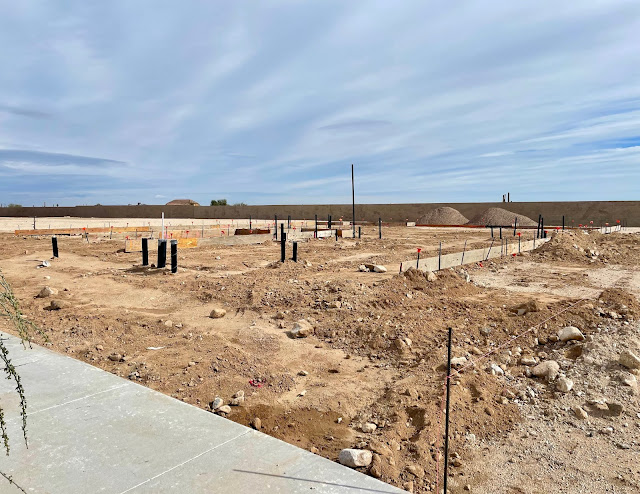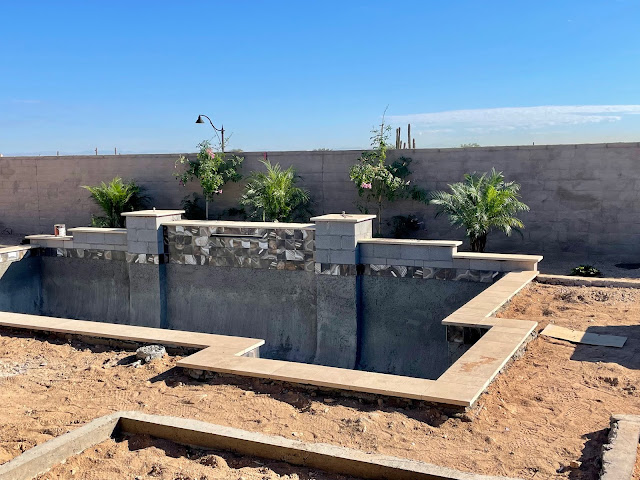Week 5: Still.The.Big.Dig.Covered.
At the end of Week 4, the inspectors arrived and blessed the plumbing and electrical underground setup, which allowed for the troughs to be backfilled. We've also had some subsequent rain, so the ground ended up be firmly compacted; good for helping to eliminate cracks in shifting concrete slabs. So now, we're basically back to where we started from with the exception of black pipe and conduit sticking out of the same ground.
As we advance into the week, the plumbers will start to connect the above-ground piping in preparation for the laying of high tensile strength guide wires for the concrete foundation. We've chosen to do slab-on-grade with post-tensioning. The principle behind post-tensioned concrete is that compressive stresses induced by high-strength steel tendons in a concrete member before loads are applied will balance the tensile stresses imposed in the member during service. So much for the technical explanation.
Simply put, in layman's terms, post-tensioning, which is a form of prestressing, has several advantages over standard reinforcing steel (rebars): It reduces or eliminates concrete shrinkage and cracking, and no joints or fewer joints, are needed. Cracks that do form are held tightly together. It allows foundations and other structural members to be thinner. Bottom line: floors don't crack, walls don't shift or crack, tile doesn't move, and slabs stay put. That's the good news.
At the other end, it's also more expensive for the cement, requires special equipment (jacks, anchors), and skilled workers under skilled supervision not to screw it up. We trade a bit more expense now for significantly fewer issues in the long run.
That's pretty much it for a slow week in the build process. Hopefully next week will have some changes to report because dirt pics get really boring. See y'all soon!







When will the camels show up?
ReplyDelete